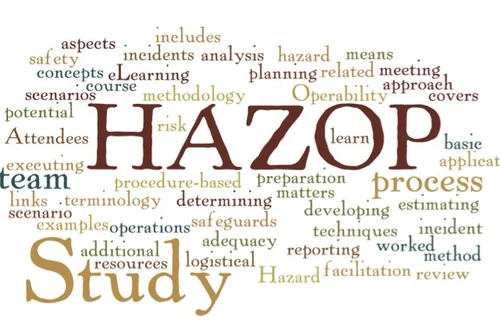The Digital Transformation of Cement Manufacturing: How Is Technology Reshaping the Industry?
The Digital Transformation of Cement Manufacturing: How Is Technology Reshaping the Industry?

The cement industry has existed for centuries that has significantly contributed to developed many infrastructures. It is, however, difficult to produce cement traditionally. It requires much labor, it consumes too much energy, and it pollutes the environment.
But now, digital technology is transforming the cement industry. Today, companies use advanced digital tools to make cement quickly, more effectively, and cheaper. It is also known as “Cement 4.0.” It involves automation, data analytics, AI, and IoT. All these technologies contribute to constructing smarter and cleaner cement plants.
Here, in this article of the day, we will see how digitalization is transforming cement manufacturing. We will also know about the leading technologies that are powering it.
Why Digital Transformation Matters for Cement Production?
The cement sector faces more pressure than ever. Increased costs of production, stringent environmental rules, and increasing demands for efficiency are all indications that going along with traditional ways is no longer an option. Digital technologies offer a solution to make operations efficient, minimize emissions, and stay competitive.
Why it is important?
Energy Efficiency: High energy is utilized in cement making. Digital solutions monitor and optimize the use of energy, reducing costs and waste.
Sustainability Objectives: Sustainability is the global priority today. Digital solutions assist in monitoring carbon emissions. They also enhance raw material consumption and reduce pollution.
Cost Reduction: Predictive maintenance and automated processes minimize downtime, reducing costs of operation.
Precise Monitoring: Smart systems ensure quality and ensure consistency of production by reducing errors.
Market Leader: When businesses employ digital technology, they become market leaders. Eventually, they produce better products and sell them at cheaper prices. This enables them to compete in the market.
Now let us know the best technologies changing cement production in the world.
How Industry 4.0 Technologies are Transforming Cement Production?
1. AI and Machine Learning
AI and ML can quickly process vast amounts of production data. It facilitates;
- Real-time process optimization for improved efficiency
- Automated quality inspection to identify inconsistencies in cement composition
- Predictive maintenance to prevent expensive equipment breakdowns
Firms such as LafargeHolcim and Cemex employ AI analytics. This allows them to operate kilns more efficiently and save energy.
2. IoT
The Internet of Things (IoT) networks machines and systems within a cement plant. It enables:
- Real-time monitoring of production lines, energy consumption, and equipment health
- Smart automation to control kiln temperatures as well as fuel consumption
- Remote diagnostics to detect potential equipment failure before it occurs
IoT-based solutions assist cement plants in reducing waste, reducing costs, and enhancing safety.
3. Digital Twin Technology
A digital twin technology is an online replica of a physical cement plant that supports manufacturers in:
- Simulating plant performance to try process improvements prior to taking them live
- Predicting maintenance requirements through the analysis of real-time equipment data
- Making better decisions with data insights
Digital twins assist cement plant manufacturers in operating plants more efficiently. They decrease downtime and lower costs.
4. Advanced Process Control (APC)
APC systems utilize real-time information to enhance production efficiency and quality. They adjust processes automatically to operate smooth operations. This technology optimizes:
- Fuel usage – Conserves energy and reduces costs.
- Accurate raw material blending – Maintains consistent product quality.
- Stable kiln temperatures – Avoids fluctuations and enhances efficiency.
5. Robotics & Automation
Robots are employed to repetitive and dangerous jobs. This reduces human contact with harmful environments in cement factories. In addition, these systems perform material transport, quality inspections, and even equipment repair. This manner, it enhances efficiency and safety in the workplace.
6. Cloud Computing & Big Data Analytics
Cloud systems provide large volumes of production data storage. They provide rapid access to insights from anywhere.
Big Data analytics aids in trend identification, detection of inefficiencies, and data-driven improvement.
This promotes ongoing optimization and improved decision-making.
7. Blockchain Technology
Blockchain is enhancing supply chain security and transparency. It tracks;
- Sourcing of raw materials
- Maintaining compliance with regulations
- Securing financial transactions within the industry
Blockchain technology promotes trust and improves accountability.
How These Technologies are Redesigning Cement Manufacturing
Embracing digital technologies yields transformative advantages:
1. Enhanced Efficiency
With processing and implementing AI-driven optimisations, manufacturers of cement plants have production cycles completed more efficiently with fewer defects. Prolonged human tuning is replaced with automated tuning in real time, which brings enhanced consistency along with higher outputs.
2. Less Downtime & Less Maintenance Expenses
Predictive maintenance allows manufacturers to detect early signs of wear and tear, therefore preventing them from growing into serious problems. For this reason, repairs can be scheduled in advance, with no surprise breaks. Therefore, production is not disrupted, downtime is minimal, and maintenance expenses are reasonable.
3. Sustainability & Carbon Footprint Minimization
Governments are making cement emissions rules tougher. Therefore, businesses must have improved methods of minimizing their environmental footprint. Digital solutions assist such businesses by:
- Reducing and monitoring emissions with AI-based monitoring
- Improving energy efficiency through intelligent fuel management
- Incorporating renewable energy such as solar, wind, and waste heat recovery
- Storing or reusing CO₂ through carbon capture (CCUS)
- Creating green cement through alternative materials such as fly ash and LC3
In addition, AI-driven energy management means that production lines and kilns operate as effectively as possible, and thus less energy is wasted. This benefits the environment as well as reducing the cost of operations.
4. Cost Optimization
Digital technologies make each stage of cement production (from raw material sourcing to end-product delivery) more efficient. With the ability to analyze vast data sets, makers are able to identify where they can reduce costs without sacrificing quality.
5. Improved Product Quality
AI helps to improve cement quality by maintaining everything in uniformity. It constantly monitors raw materials, grinding, and chemical composition to make sure that there are no dramatic changes. This is to ensure that the final product is always quality and standard.
6. Enhanced Supply Chain Management
Supply chains that are digitally connected improve logistics efficiency. From shipment tracking in real time to predicting demand, manufacturers get end-to-end visibility of their business, minimizing delays and improving customer satisfaction.
What are the biggest challenges of cement digitalisation?
Digital transformation has many advantages, but nevertheless the cement sector has numerous challenges, such as:
1. High initial Investment
The excessive investment in AI, IoT, digital twin technology, and other technology can prove to be a hindrance. But, by investing in such technologies you will have numerous long-term advantages which includes lower costs, increased efficiency as well as sustainability.
2. Cybersecurity Risks
With greater connectivity comes cybersecurity threats. Manufacturers of cement plants are required to:
- Adopt robust cybersecurity measures
- Adopt cloud security systems to secure data from cyber attacks
- Educate personnel on best cybersecurity practices
3 .Challenging to Adopt for Small Cement Plant Manufacturers
Small cement firms are often unable to adopt digital transformation due to various reasons:
- Finances to adopt new technology are limited.
- There are not enough skilled personnel to manage digital equipment.
- Traditional businesses are reluctant to move away from tried and tested processes.
But things are improving gradually. Subsidies by the government and collaborations with industry are making it easier for small players to adopt digital solutions.
4. Skill Gaps & Workforce Adaptation
It takes employees to change when introducing new technologies. Employees need to be trained on working on digital systems. Companies need to invest in developing skills to ensure the transition is easy.
What is the Future of Digital Cement Production?
Technology will progress in the following ways, and we can look forward to:
- Increasing AI automation, less human interaction in production
- Widespread digital twin adoption for real-time optimization of plants
- More integration of 3D printing, producing bespoke concrete structures with minimal waste
- Innovation in sustainable cement to achieve global carbon neutrality
The cement industry is headed clearly towards a future that is more digital, efficient, and environmentally friendly.
Final Thoughts
Digitalization is no longer a choice but it’s a requirement for cement plant manufacturers who wish to remain competitive and sustainable. From AI-driven production to carbon capture technologies, going digital will present new avenues for efficiency and growth.
If you are within the cement industry, the ideal time to make an investment in intelligent technology, educate your human capital, and embrace green processes is now.







